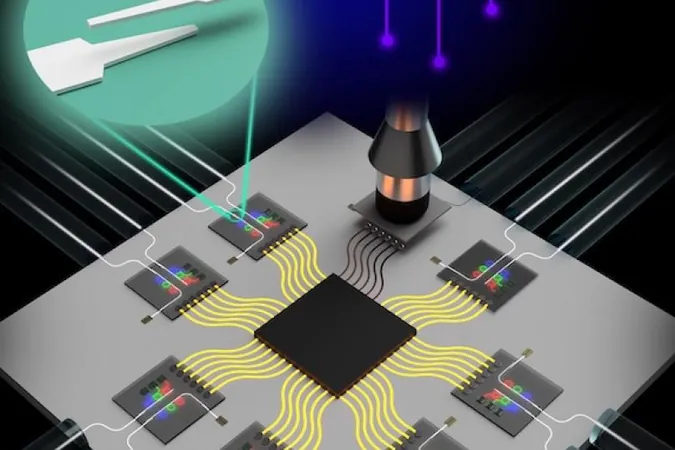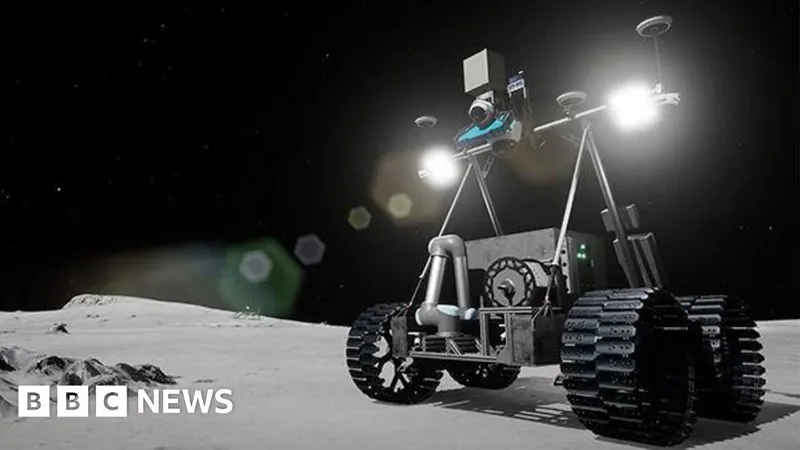
Revolutionary MIT Microchip Blends Light and Electricity for Energy-Efficient Computing!
2025-07-28
Author: Emma
The Future of Technology: Merging Electronics and Photonics
Imagine a world where our devices are not only faster but also consume less energy. MIT researchers are pioneering just that by merging electronics, which uses electricity for data manipulation, with photonics, which harnesses light. This groundbreaking combination is set to revolutionize global data traffic, promising both efficiency and exponential growth.
A Game-Changer: The FUTUR-IC Team
Meet FUTUR-IC, MIT's innovative research team backed by the National Science Foundation's Convergence Accelerator. Led by Anu Agarwal, they are on a mission to create a more resource-efficient microchip industry. Agarwal emphasizes, "Our goal is to streamline the value chain of microchips to optimize resources." Together with Professor Lionel Kimerling, who calls integrating photonics with electronics the "transistor for the 21st century," they are laying the groundwork for the future.
A New Breakthrough: Co-Packaging for Efficiency
The team has unveiled a novel approach to co-package photonic chips with electronic ones, addressing challenges faced by the current methods. Their new device can be produced using existing electronics equipment, drastically reducing costs and making it accessible for mass production. A paper detailing this breakthrough graced the cover of *Advanced Engineering Materials*, showcasing their innovative efforts.
Navigating the Data Explosion
As of 2020, over 50 billion devices were connected to the cloud, a figure projected to grow dramatically. With data-center traffic increasing by 1,000 times every decade, efficient communication has become crucial. Kimerling stresses the importance of equipping technology to handle this surge without proportional energy costs—a challenge that their research aims to tackle.
Overcoming the Connection Challenge
Currently, the intricate process of connecting electronic and photonic chips is both costly and complicated. It involves precise alignment to ensure the smooth transmission of light between the components. The new technology introduces an evanescent coupler, which offers more flexibility, allowing for simpler, cost-effective assembly and enhancing data communication.
Innovative Light Transmission
The evanescent coupler also enables vertical light transmission between stacked chips, overcoming a major limitation of current technologies. Ranno highlights that this major step forward allows light to efficiently navigate complex arrangements, thereby enhancing overall chip performance.
The Future is Bright!
With their incredible advancements in microchip technology, Agarwal, Kimerling, Ranno, and their team are creating a reliable, effective, and space-efficient solution for the integration of photonics and electronics. This innovation could very well set the stage for a new era of computing and communications, where energy efficiency is no longer an afterthought but a standard.









 Brasil (PT)
Brasil (PT)
 Canada (EN)
Canada (EN)
 Chile (ES)
Chile (ES)
 Česko (CS)
Česko (CS)
 대한민국 (KO)
대한민국 (KO)
 España (ES)
España (ES)
 France (FR)
France (FR)
 Hong Kong (EN)
Hong Kong (EN)
 Italia (IT)
Italia (IT)
 日本 (JA)
日本 (JA)
 Magyarország (HU)
Magyarország (HU)
 Norge (NO)
Norge (NO)
 Polska (PL)
Polska (PL)
 Schweiz (DE)
Schweiz (DE)
 Singapore (EN)
Singapore (EN)
 Sverige (SV)
Sverige (SV)
 Suomi (FI)
Suomi (FI)
 Türkiye (TR)
Türkiye (TR)
 الإمارات العربية المتحدة (AR)
الإمارات العربية المتحدة (AR)